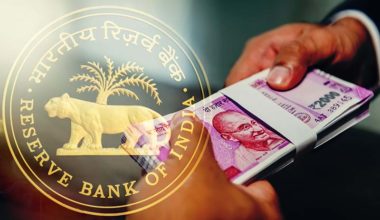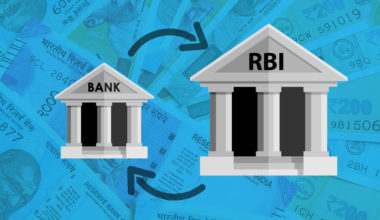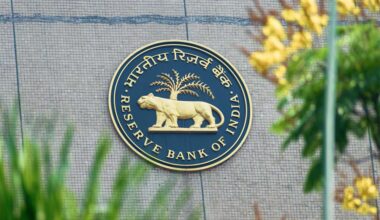In an economy, banks play a significant role in taking deposits from investors, pooling them and then lending this money to borrowers. They act as an intermediary between depositors and borrowers. Sometimes, banks may end up lending out in excess. This can make it difficult for banks to meet obligations and tackle unexpected scenarios. To ensure this does not happen, the Reserve Bank of India (RBI) uses the statutory liquidity ratio (SLR) to assess the liquidity available at the bank’s disposal.
To explore more about the SLR definition, the functioning of SLR in banking and its types, keep reading.
What is the Statutory Liquidity Ratio?
With regard to banking terms in India, the statutory liquidity ratio can be defined as the minimum reserve requirement that commercial banks need to maintain in the country. The word statutory refers to legally and mandatorily required. The term is used by the Indian Government and the Reserve Bank of India (RBI) Act mandates that every commercial bank must keep with their demand as well as time deposits as liquid assets.
Assets such as securities, gold and cash are approved by the Indian government to be maintained as types of statutory liquidity ratio. Apart from these few asset types, securities sanctioned by market stabilisation schemes (MSS), market borrowing programmes and treasury bills are considered as part of the statutory liquidity ratio.
Institutions Asked to Maintain SLR
In India, all non-scheduled commercial banks, scheduled commercial banks, central and state cooperative banks, and primary (urban) co-operative banks have to mandatorily maintain the statutory liquidity ratio in their vaults.
How Statutory Liquidity Ratio Functions?
Banks need to mandatorily provide updates or reports regarding SLR status, alternatively, every Friday, to the Reserve Bank of India. If banks are not successful in maintaining the mentioned SLR status as mandated by the RBI, the bank will need to pay penalties. As per the RBI, the current SLR rate in India to be maintained by banks is 18%.
When there is a rise in the SLR rate, banks are allowed to inject more funds into the economy leading to the overall development of the nation.
What are the Objectives of SLR?
CRR and SLR are types of monetary policy tools that are used by RBI in order to maintain liquidity. Some of the main objectives are:
- SLR is used by RBI to maintain credit flow into the banks
- Holds back commercial banks from liquidating their assets when RBI increases the CRR rate
- SLR compels commercial banks to make investments in government securities
- When banks invest a portion of deposits in government securities it ensures the solvency of the banks
- SLR helps manage the government’s debt
Uses of SLR
The RBI is the chief monetary authority of the economy and is responsible for managing inflation levels, cash flows and price levels.
To effectively carry out the functions, RBI uses plenty of tools such as marginal standing facility, repo rate, reverse repo rate, CRR, SLR and others. SLR acts as a measure by the RBI to control inflation in the country. Increasing the SLR leads banks to invest in government securities whereby the level of cash is reduced in the economy. This raises inflation and price levels. Doing the exact opposite helps to sustain cash flow within the economy.
Elements of Statutory Liquidity Ratio
As per Sections 24 and 56 of the Banking Regulations Act of 1949, all banks are required to maintain SLR. These are some of the important components:
- Net Demand and Time Liabilities (NDTL)
NDTL refers to total liabilities and deposits of the public that are held by banks with other ones. Demand deposits contain liabilities that the bank is meant to pay on demand. They include demand liabilities, deposits portion of saving bank deposits, and demand drafts and balances in overdue fixed deposits.
- Liquid Assets
Liquid assets get easily converted into cash such as gold, treasury bills, government-approved securities, cash reserves and government bonds. Also, comprises a market borrowing program and a market stabilisation scheme.
How is the Correct SLR Level Decided?
All banks have a particular component, which is known as risk capital which refers to capital guaranteed by owners of the bank.
The risk capital acts as a buffer for any type of risk that has been taken by the banks. When banks function by taking on too much risk, it becomes important for them to approach the capital very carefully. To ensure that the risk capital is secure, the bank must maintain the risk capital in the form of the statutory liquidity ratio.
Impact of Statutory Liquidity Ratio on Base Rate
The SLR plays a crucial role in determining the base rate for the economy. The base rate is the minimum rate fixed by the Reserve Bank of India (RBI) and it is the rate below which banks cannot lend funds to any borrower. The rate regulates transparency when banks lend out to the individuals within the credit market. The base rate ensures banks offer low expenses of funds to the clients. It helps to reduce loan expenses for borrowers.
In India, the base rate is influenced by cash reserve ratio, statutory liquidity ratio, overhead costs, cost of borrowings, cost of deposits and other things. The Reserve Bank of India and the government of India jointly decided to ensure a balanced SLR since it impacts the base rate. The SLR is monitored regularly to ensure that banks are empowered with greater leverage and better-influencing capability.
Reduction in Statutory Liquidity Ratio
Most often, the Reserve Bank of India is proactively involved in reducing the statutory liquidity ratio of the banks. There are a couple of motivations behind doing this.
- It is done so that banks can jointly work with higher authority and without influence from other institutions.
- Since the base rate influences the lending process on a large scale, the central bank or Reserve Bank of India carefully ensures that the lending process is carried out smoothly across banks in the country. Due to this, the SLR is reduced from time to time to the main favourable position of the base rate.
- The rate is lowered at times to cut through the monotony with which banks function in their day-to-day operations. Reducing the statutory liquidity ratio gives banks the opportunity to work with commitment and dedication.
- The SLR rate is also reduced with the intention of making financial as well as economic betterments in the entire country.
Also Read: RBI Guidelines for UPI Frauds in Banks
Conclusion
Thus, we can understand that the statutory liquidity ratio plays a very important role in the Indian economy. It maintains healthy credit flow and inflation in a country by enabling financial institutions to maintain liquidity, which acts as a buffer in times of unexpected cash crunch. SLR also reduces commercial bank holdings in government securities and instead emphasises private security holdings. SLR is an effective monetary tool that helps to build transparency between other Indian banks and the RBI.




